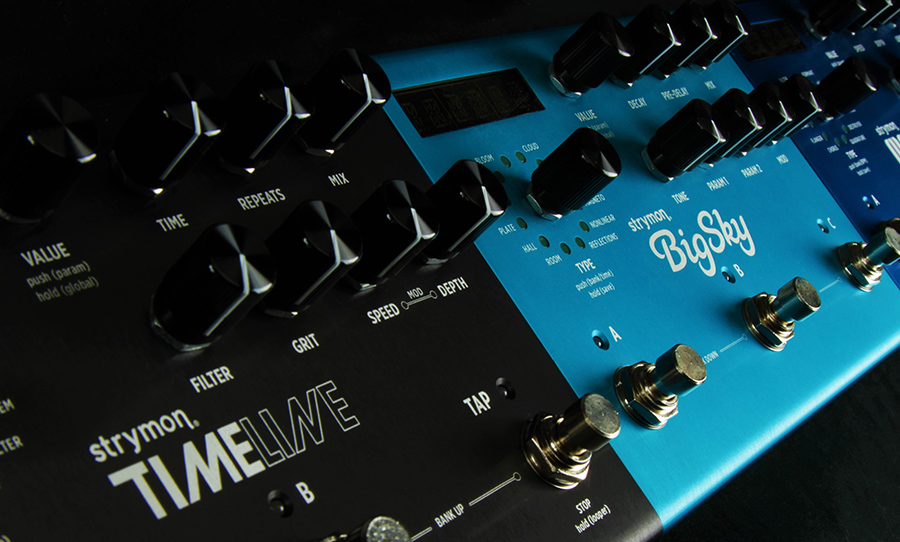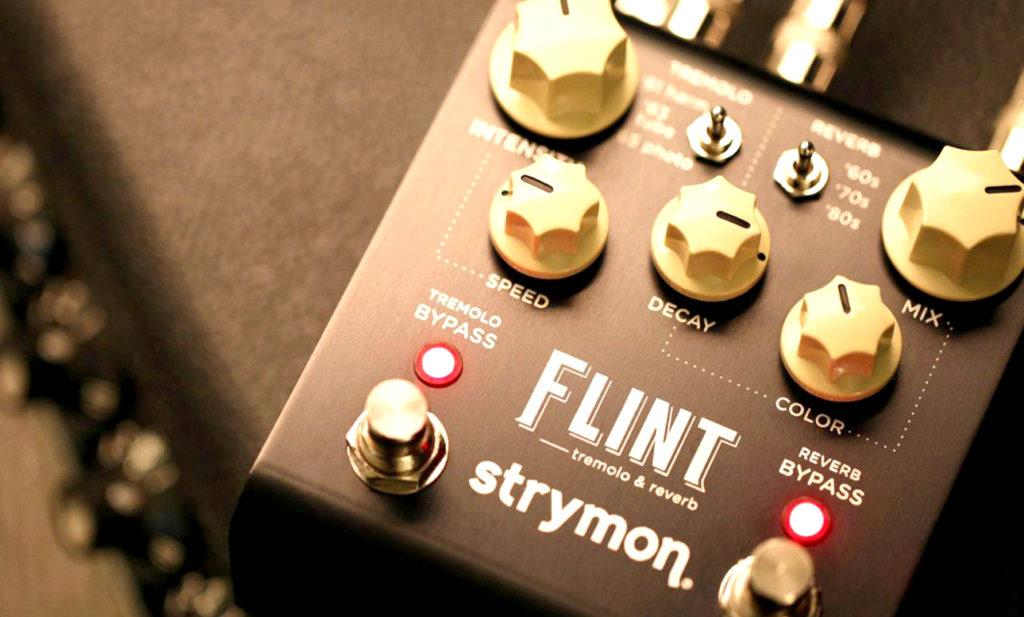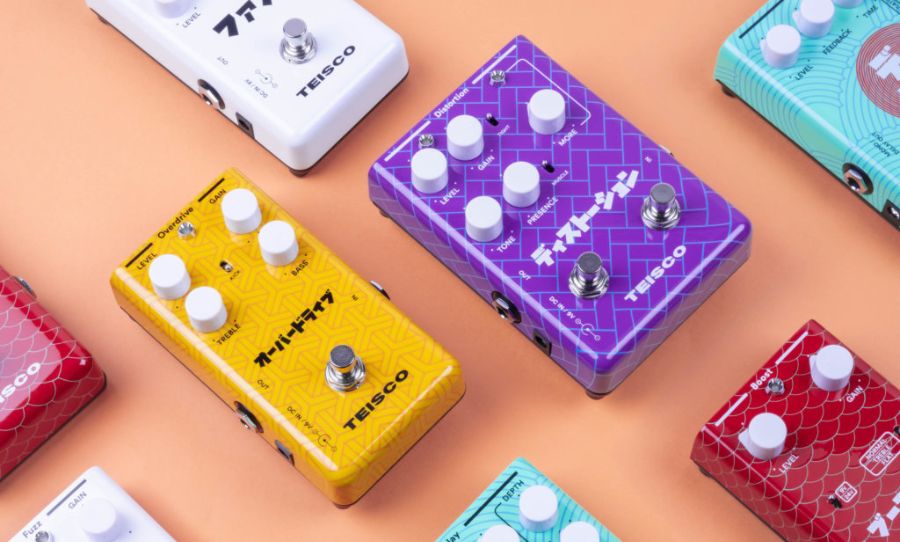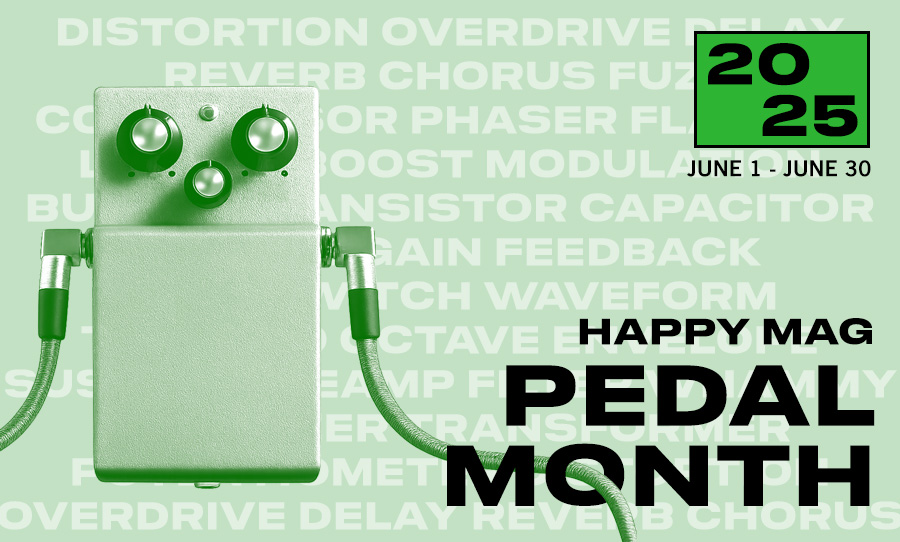Strymon Audio currently sits ahead of the curve as some of the best pedal makers in the game. Today we take a deep dive look into these sonic titans.
I’m not sure if it’s just me, but it currently feels like there has never been a more exciting time to be a part of the pedal world.
Musicians have constant access not only to the iconic pedals of the past, but have a constantly updating list of incredible pieces of kit to refine the way our instruments can sound — and Strymon has not missed the bus on that front.

Grown in Westlake Village CA, Strymon initially existed under the name Damage Control Engineering and spearheaded by Lucian Tu and Gregg Stock. The Damage Control brand was pretty prolific for its time, with a large range of pedals stemming from Gregg’s handcrafted circuit boards, with chassis designed by Lucian.
Take the Demonizer Pedal, for example, a distortion unit that uses using high-voltage vacuum tubes and pre+post distortion parametric EQ’s to create a range of badass and gnarly metallic guitar tones. (and try not to get nostalgic watching its’ YouTube demo).
Digital Love
While Gregg and Lucian were working on these pedals, two of the other additions to the Damage Control team — Pete Celi, and Dave Fruehling — were busy building more intensive pedals which integrated DSP technology to affect their sound — the very same technology that would serve as the basis for the Strymon Brand. DSP chips essentially transfer the analog signal into a digital signal and then convert it back to analog, and this is what the Strymon brand has become known for.
Strymon pedals work by using SHARC DSP processors, which have an incredibly high sample rate of 96kHz (slicing each second of audio into 96,000 individual samples), which combined with its high clock frequency (which allow it to do these 96,000 sample slices in a couple of nanoseconds) mean that each individual sample can be effected 2500+ times before converted back to an analog signal.
It’s incredibly hi-fi shit, which ex-Strymon employee Michael Callas describes as “the equivalent of having 2500+ cake artists working a production line, who each add a different ingredient to a cake one-by-one, but crank out 96,000 of them every second“.
Now it may sound intense, but it essentially just gives the gang at Strymon intricate control over how the signal is affected, down to the molecular level. It’s impressive technology, yes, but the way they put it to work in their iconic pedals are what have made them an internationally renowned powerhouse.
Let’s have a look at some of these stompboxes.
Big Sky
Big Sky is arguably one of the most beautiful reverb effects units that you can get your ears around. Out of the box, Big Sky has 12 different reverb machines with onboard adjustable envelope mods, a Sustain/Freeze Frame setting to hold your tone in place, and fully assignable knobs should you wish to make custom parameters.
A testament to Strymon’s incredible design philosophy, it’s not just useful as an effects unit, it can even be filtered through speaker cabinet emulation to provide direct outs for your more lowkey straight-to-PA gig.
It’s the perfect pedal for all varieties of musical instruments, types of production or genres of music, should you need to bring your sound way out into the deep space of the third dimension.
Flint
Flint is an effects unit that is modelled after the Fender guitar amps of yore, bringing their iconic marriage of tremolo and reverb into the 21st century. You get 3 tremolo settings —a Harmonic low/high filtering pulse, an LFO power tube push and pull, and an almost square wave sounding Photocell trem.
Each of these individual settings is reminiscent of three totally different styles of tremolo circuitry, giving a huge amount of variety to the way the unit sounds. But that’s not all, it also includes 3 reverb machines that use the Strymon design ethos to whip up a vintage amp spring, a smooth digital plate, and a regenerative filtered hall.
All-in-all, Flint is a super diverse, gorgeous-sounding pedal that does all it can to provide not only the nostalgic tones of a mid-2000s post-rock album, but also 1960s spaghetti western, or a timeless Bayou blues jam.
Timeline
If Big Sky is the king of reverb, Timeline definitely throws its hat in the ring for the title of best delay pedal available. Much like Big Sky, Timeline includes 12 delay machines, all of whom run the gamut from crisp and icy studio-quality digital delays, to saturated fuzzy tape delays. All of them can all be tweaked and saved in the pedal’s massive preset bank.
In classic Strymon fashion, however, it’s clearly not enough to ship out a world-class delay pedal by itself; TimeLine is also an incredibly powerful looper. It has up to 30 secs of stereo looping functionality, which can be routed before or after the delay FX, for infinitely customisable sound play.
It’s an absolute feat of human engineering that all of this can be done in the one pedal, and is evidence of the titanic capabilities of Strymon engineering.
Sunset
Whilst Strymon is definitely known for its spacey and blissful effects units, the Sunset Dual Overdrive pedal is proof that Strymon’s pedal library is just as versatile as it is high quality. Sunset is Strymon’s interpretation of six of the most iconic overdrive/boost circuits used throughout music history, in a flexibly routable, dual-channel package.
It’s essentially two overdrive pedals in one, which can put out the extra amount of crunch necessary for the more hard-rockers of the pedal market. Plus, it sounds fucking awesome.
Despite Strymon’s humble origins, there’s nothing humble about where they currently reside in the stompbox game. Their mix of beautiful sound design philosophy, ergonomic unit design, and impressive circuitry has made some of the most interesting effects units you can currently use. And it’s exciting knowing that their trajectory isn’t even close to ending any time soon.
They might be priced at a bit of a premium, but each of their pedals is so versatile, and often have so many features, that buying a Strymon FX unit is often like buying a 10-in-one inspiration machine. Since they have such a rich and versatile approach to sound manipulation, it would really be hard to sit with a single one of these pedals and not smash out something musically fascinating.
For more details, visit the Strymon website.


